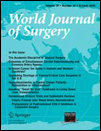Out with the Old, In with the New: A Novel Approach to Treating Pain Associated with Rib Fractures
Michael S. Truitt, MD, is a member of the Speakers Bureau for I-Flow Corporation. This report, however, is the sole creation of the authors, and the company was not involved in the creation of this manuscript in any way.
Abstract
Background
Rib fractures continue to be a challenging problem from both a pulmonary and analgesia standpoint. As a result, numerous modalities have been used to treat this condition, but none has proven universally available and efficacious. The objective of this pilot study was to assess the efficacy of a novel technique for placing an elastomeric infusion pump (EIP) catheter (On-Q; Lake Forest, CA, USA) in the extrathoracic paraspinous space to create a continuous intercostal nerve block.
Methods
This was a prospective, nonrandomized study conducted in the surgical intensive care unit (SICU) of an urban level II trauma center. We developed a novel technique for placing EIP catheters in the extrathoracic paraspinous space to provide continuous intercostal nerve blockade. We subsequently evaluated 30 consecutive blunt trauma patients with three or more unilateral rib fractures. The catheters were infused with local anesthetic, and the dose was titrated to achieve adequate analgesia. For each patient, preplacement numeric pain scale scores (NPSs) and sustained maximum inspiration (SMI) lung volumes were determined. Sixty minutes following placement of the catheters, the NPS and SMI were repeated. The patients were monitored for any procedural or drug-related complications.
Results
The mean age of the patients was 65 years (22–92 years); the mean ISS was 14 (9–16); and the mean number of rib fractures was 4.4 (3–8). Overall, the mean NPS significantly improved (preplacement NPS 9.03, postplacement NPS 3.06; p < 0.05) and was associated with a significant increase in the SMI (preplacement SMI 0.40 L, postplacement SMI 1.1 L; p < 0.05). The catheters remained in place for an average of 98 h (72–146 h), and there were no procedural- or drug-related complications.
Conclusions
These pilot data indicate that the placement of EIP catheters in the extrathoracic paraspinous space may be a safe, viable, and efficacious procedure for ameliorating pain secondary to rib fractures.




